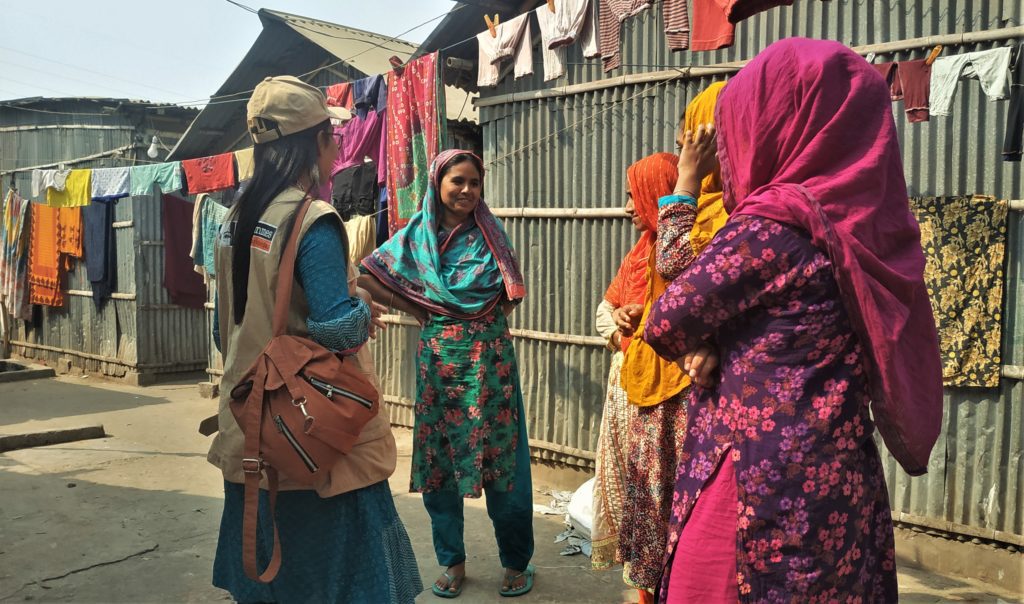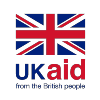A recent visit to Gojmohol, Hazaribagh, inspired this piece, written by Sukanta Paul and Jiniya Afroze from Terre des Hommes, where they are implementing CLARISSA’s social protection intervention. The purpose of this pilot is to trial and evidence an innovative social policy intervention for tackling social ills, with a focus on Worst Form of Child Labour (WFCL). Its objective is to support people in building individual, household and group capacities.
The principles
The intervention began by facilitating need-based child and adult groups, collecting bi-monthly household information using real time monitoring through a custom-made digital tool. The first round of cash transfers were distributed to around 1600 households living in vulnerable conditions. The cash transfer is unconditional and universal, meaning it covers all households in the neighbourhood.

The community will receive these cash transfers for six months, recognising that cash is a vital resource and can augment the process of building agency and capacity. The design of our social protection cash transfer follows the two main principles mentioned above: universality and unconditionality. A universal approach was adopted to avoid the ethical pitfalls associated with within-community targeting. As well as this, universality improves the conditions for unanticipated, emergent change of the kind that is made more likely when all community members participate in a shared experience. Finally, this decision enables the Social Protection pilot to meaningfully and empirically speak to debates about universality within social protection, including those touching on Basic Income.
The decision to make the cash transfers unconditional was taken as much of the literature on the ethics of cash transfer suggest that conditions are unethical and of limited effectiveness. For example, many cash transfer programmes that aim to reduce child labour are conditional, making receipt of transfers conditional on school attendance. Unconditional cash transfers (UCTs) have proven beneficial in reducing poverty, improving access to basic services, and promoting social cohesion. CLARISSA’s intervention follows this logic and will provide its cash component with no conditions. Moreover, the programme’s assumption is that UCTs can motivate families to invest in their children’s future.
The action
Transfer amounts are based on a set amount for all households, topped up for each additional child under 18 years of age. This approach to determining transfer amounts recognises greater levels of vulnerability where there are a greater number of children in the household, which also makes the intervention child centred. Household members decide who will be the recipient of the money in their household, and they will decide on how they are going to use it. Researchers collect bimonthly data to monitor change in the households. To support this quantitative data, researchers are also conducting episodic qualitative explorations that are providing more grounded and in-depth information about the change.
A day in the community
We visited the community with an open mind following the first cash transfer. We wanted to talk to participants and find out how they are doing? How do they feel after they have received the cash? Their feedback on the cash distribution process? Feedback about services received from Upay (a mobile financial service provider in Bangladesh) agents? Who received the money? What have they done with the payment and why?

We spoke to around 10 women who kindly agreed to give us some time despite their busy schedule: one was cooking the midday meal, one was taking care of her children and a few others were chatting in a common space near their house. The transfer being universal, unconditional and to some extent child centred gave us a sense of ‘ahingsha’ (non-violence) and shonghoti (cohesion) in the community.
One of the women we talked to said:
“My daughter told me, mum we haven’t eaten beef for a long time, so I bought beef for us using some of the money (smile) and I kept some of it for my daughter’s school enrolment.”
Another, stood beside with her toddler, replied:
“I am planning to save the full amount as I want to buy a sewing machine for me. I learned tailoring and if I can have a sewing machine of my own then I would be able to make some earnings out of it.”
Another woman told us that her daughter is also taking part in one of our action research groups and she will enrol her daughter into school using the money. While talking, the participants also shared that they know the amount received by their neighbours. The amount, logic, principles, and duration of the cash transfer has been explained to all participants. One of them further added:
“We have received the same amount per household, but the total amount varied depending on the number of children we have in the household. For instance, that Apa (sister) received somewhat more than me, I received a bit less, but that’s not a problem. She received more because of her children. We were explained clearly why the amount would be different in each household and we are absolutely fine with this.”
Cash is a vital resource in capitalist societies. It is almost a pre-requisite to life, survival and development. We also know that cash and access to it are inextricably linked to poverty and child labour. But at the same time, cash transfers can bring problems and tension to the community. For CLARISSA, the cash transfer process went very smoothly, thanks to countless hours of involvement by community mobilisers with the community over the last two years. This intense work has built a strong level of trust and understanding. We believe that the potentially contentious difference in amounts received by households has been well accepted because of our design approach which is not only creative but also ethically sound and context oriented.
We are continuing to document everything happening in relation to the social protection intervention in the North Gojmohol community. Our ingenious community mobilisers are constantly documenting their experiences and learning from their encounters with the community through micronarratives. All of these will be very useful and thereby give a critical lens to our social protection programme evaluation.
